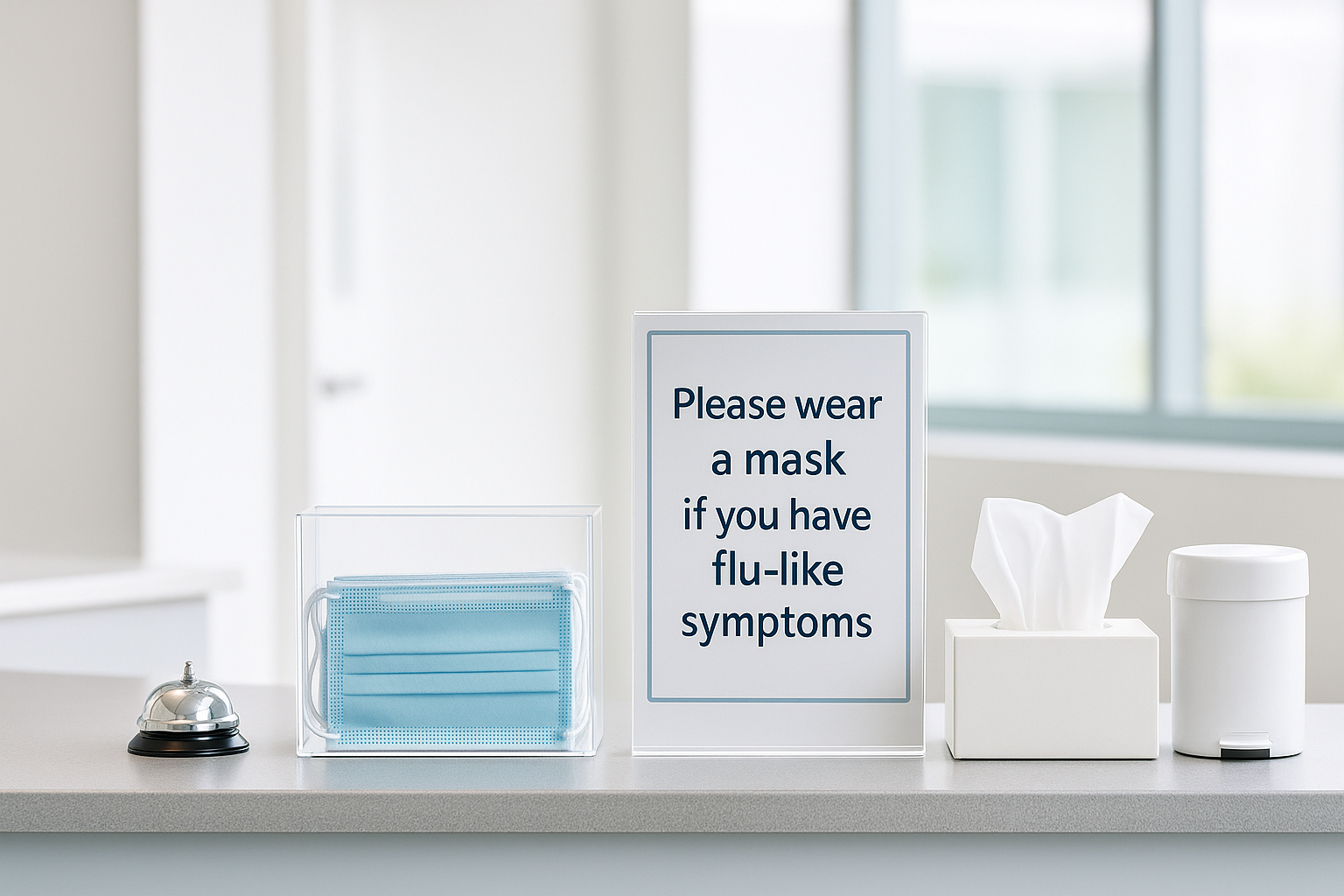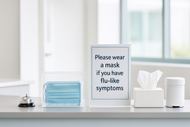How to Prepare Your Facility for Flu Season 2025
4th Aug 2025
PPE, Test Kits & Infection-Control Essentials for Australian Clinics

Flu season in Australia typically runs from April to October, with activity peaking during June to August. If your clinic, aged-care home, dental surgery or allied-health practice is seeing more respiratory cases this winter, this is the moment to review stock levels, refresh staff training and tighten patient-flow protocols. The goal is simple: keep your team protected, keep your patients moving efficiently through care, and minimise transmission risk.
This guide covers the core elements you’ll rely on most—PPE, rapid testing for influenza and COVID-19, and practical infection-control supplies—then ties them together with a straightforward readiness plan. We’ve included prompts to shop essentials from Biofast so you can restock quickly across Australia.
Respiratory PPE: fit, availability and rotation
Start by confirming that your respiratory PPE suits the variety of faces on your team. Maintain several P2/N95 respirator sizes and models so more staff achieve an effective seal and keep surgical masks compliant with AS 4381 Level 2 or Level 3 for patients and low-risk tasks.
Eye protection remains important as well; choose either disposable face shields or reusable goggles and ensure they can be disinfected between users.
Store all PPE in a cool, dry location and rotate stock on a first-in, first-out basis so earlier expiry dates are used first.
As a planning reference, a five-room clinic seeing around 120 patients per day typically needs one to two respirators per clinician per shift—more if you perform aerosol-generating procedures—plus a two-to-three-week buffer to avoid stock-outs.
If you need to top up quickly, browse Respirators & Surgical Masks.
Gloves and gowns: comfort, compliance and sustainability
Gloves should be powder-free nitrile across the full size range from XS to XL to ensure comfort and a reliable barrier. Many facilities are also adopting biodegradable nitrile gloves to reduce plastic waste without compromising performance; they’re a smart way to support sustainability targets during a high-consumption season.
For body protection, choose isolation gowns rated AAMI Level 2 or 3 for splash protection and keep lightweight aprons for non-clinical tasks.
Position glove dispensers at every hand-hygiene point and store gowns near treatment rooms so staff can gear up without breaking workflow. In community and aged-care settings, darker glove colours can help maintain a professional appearance by hiding stains.
You can restock Nitrile & Biodegradable Gloves and Isolation Gowns.
Rapid testing: influenza A/B and Flu+COVID combinations
Testing supports swift triage and the right isolation decisions. Keep both influenza A/B rapid antigen tests and combined Flu A/B + COVID-19 kits on hand so you can match the test to the clinical presentation. Store kits within their specified temperature range—often between 2 °C and 30 °C—and check expiry dates monthly. During peak weeks, plan for one to two tests per suspected case and build in a 20 percent buffer to handle surges. Record LOT numbers and results in line with your local protocol so your documentation remains complete.
Explore Rapid Tests and choose the influenza and combination kits that best suit your caseload.
Infection control and environmental cleaning
Hand hygiene remains the biggest lever you have. Place alcohol-based hand rub (≥ 70% v/v) at every entry, at reception and in each clinical bay so that clean hands become the easiest default. For surfaces, select hospital-grade disinfectant wipes or solutions with proven virucidal activity and make contact times visible on cleaning posters. Focus staff attention on high-touch objects such as door handles, chair arms, bed rails, pens, EFTPOS keypads and stethoscopes. Use soluble laundry bags for soiled linen and maintain colour-coded clinical-waste and sharps containers so the disposal pathway is unambiguous. A daily clean, backed by a thorough terminal clean when rooms turn over, works best when individual areas are assigned to named staff on each shift.
Reorder Disinfectants Wipes and Hand Hygiene supplies at biofast.com.au.
Patient flow, triage and ventilation
The experience at your front door sets the tone for infection control. A small respiratory station with masks, tissues, alcohol hand rub and a bin encourages good etiquette before patients reach the desk. Clear signage— “If you have fever, cough or sore throat, please wear a mask and alert reception”—helps staff manage expectations without difficult conversations.
Where space allows, separate symptomatic patients from others, and during surges consider outdoor or in-vehicle waiting. Good air changes make a measurable difference in smaller rooms; portable HEPA units are effective, and opening windows is worthwhile when practical and safe.
Staff protection, training and vaccination
A well-prepared facility also cares for its team. Encourage annual flu vaccination, run quick micro-drills on donning and doffing, spill response and waste segregation, and schedule user seal checks for P2/N95s at the point of donning. Make your sick-leave policy explicit and support remote triage where appropriate. These small steps reduce transmission risk and maintain staffing resilience through the peak months.
Local compliance notes for Australia
When purchasing or auditing stock, choose respirators compliant with AS/NZS 1716 and surgical masks compliant with AS 4381. Use TGA-listed rapid tests and disinfectants where applicable and keep Safety Data Sheets (SDS) easily accessible for all chemicals and hand rubs. These measures strengthen safety, support accreditation and signal professionalism to staff and patients alike.
Planning your stock levels
Use last winter’s consumption as a baseline and set simple par levels so replenishment is routine rather than reactive. For example, if your clinic averages 45 P2/N95 respirators per day, a two-week par is 630 units, and your reorder point might sit at half that level. Apply the same logic to masks, gloves, gowns and tests, and add a modest surge buffer during June to August. Clear min/max labels on shelves and a monthly expiry check are surprisingly powerful at preventing waste and last-minute scrambles.
Ready to stock up?
If you need to prepare quickly, you’ll find respirators and surgical masks, disposable medical gloves, isolation gowns, influenza and Flu+COVID test kits, hospital-grade disinfectants and hand-hygiene products. For bulk pricing or help building a custom kit, call 03 8905 4449 or email orders@biofast.com.au—our Melbourne team can quote the same day.

